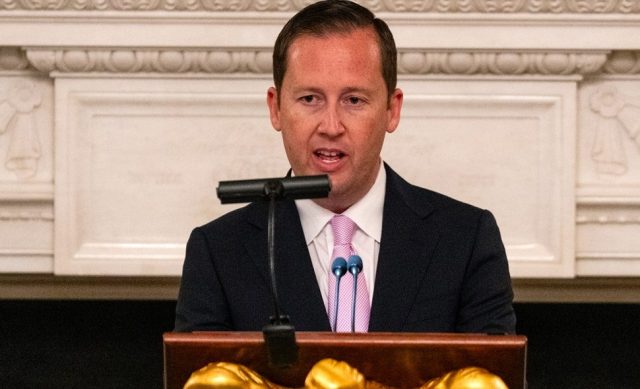
On August 23, President Donald Trump announced on “Truth Social” that he was appointing his “close aide” Sergio Gor as the US ambassador to India and Special Envoy for South and Central Asian Affairs. He added that he needed someone whom he could fully trust “to deliver on his agenda to the most populous region in the world and help make America great again”.
However, on September 11, Secretary of State Marco Rubio, while introducing Gor to the Senate Foreign Relations Committee, said that India is at the core of the Indo-Pacific region and in the 21st century, “the story is going to be written in the Indo-Pacific”. Rubio also said that it was President Trump who had renamed “US Pacific Command” as “Indo-Pacific Command” and laid down the US strategy on the Indo-Pacific region. He added that the appointment of Gor with “direct access to the Oval Office, to the President” was critically important.
This would mean that Sergio Gor, for the first time in American history, would have an unprecedented expanse of area to supervise. As of now, the US Indo-Pacific strategy is implemented by the Bureau of South and Central Asian Affairs (13 countries) and by East Asian and Pacific Affairs (33 countries). Since most of these states already have ambassadors, it would mean that Sergio Gor would be a “Super Ambassador” executing the President’s strategies, which means supervising these 46 embassies.
This is a marked departure from the existing system of “ambassadors at large”, which started in 1949 under Article II, Section 2 of the US Constitution for specific foreign policy issues, irrespective of jurisdiction. It is also not in conformity with the system of ambassadors accredited to more than one country, which started in 1882.
Published literature reveals that the only time an American ambassador was asked to manage portfolios beyond his accredited country was in 1962, when John F Kennedy was the president. Kennedy wanted his ambassador, Professor John Kenneth Galbraith (1961-1963), to consult Prime Minister Jawaharlal Nehru on the working of the International Commission for Supervision and Control on Vietnam, of which India was the co-chair.
Historically, it was not President Trump who coined the term “Indo-Pacific” or underlined its importance by linking the Indian and Pacific Oceans. Veteran Indian diplomat-historian Sardar K M Panikkar had pointed out in his book India and the Indian Ocean (1945) that German general-geographer-academic Karl Haushofer had conceived the Indo-Pacific concept in the 1920s, and his treatise Geopolitik of the Pacific Ocean was adopted as “a virtual textbook for Nippon’s naval strategy” in the 1920s.
Panikkar wrote this book on the eve of India’s Independence to guide our leaders into diversified strategic thinking, citing the importance of seas in our future security architecture. He said that till the middle of the 13th century, control of Indian waters was entirely in Indian hands. Even the Arabs, “who succeeded to the supremacy of the sea, after the breakdown of Chola naval power, were only commercial navigators” and did not pose any security threats.
Karl Haushofer’s ideas on the strategic importance of the Pacific Ocean had crystallised during his tenure as the German military attaché in Japan during 1909-10. Haushofer stayed in India and Ceylon (Sri Lanka) for 10 weeks during his sojourn, which convinced him that the “monsoon countries” such as India, Ceylon and China constituted a geopolitical unit. He also saw the then developments in the Indian Ocean Rim, especially in China, Japan and the Pacific as an opportunity to spread German influence over the region and throw out colonial rule.
Haushofer’s 1924 paper Building Blocks of Geopolitics, Geopolitics of Pan-Ideas, and German Cultural Politics in the Indo-Pacific Space envisaged the Indo-Pacific as “an organic and integral space primed for political consciousness” based on an oceanographic foundation, “with novel evidence in marine sciences, ethnography, and philology, but also legitimated it as a social and political space.”
This paper and his other works were widely translated into Japanese and circulated among security and academic circles, which became cornerstones of Japan’s Pacific-Indian Ocean strategy before the Second World War.
What would be Sergio Gor’s charter? The Trump 1.0 strategy was building collective security through a network of regional allies and partners through the Quad and allied pacts, promoting economic prosperity in that area and encouraging good governance and shared principles. This was to be achieved through increased engagement with the Indian Ocean and the Pacific Islands region and to respond more forcefully to Beijing’s efforts, which were meant to undermine the US policy of safeguarding the sovereignty of Indo-Pacific partners.
True, the Trump 2.0 emphasis on tariffs with coercion and indifference has made these countries unhappy. That should have helped China to “step in”. However, the “Pacific Islands Forum” meeting in Solomon Islands this month did not entirely go in favour of China.
The writer is former special secretary, cabinet secretariat. His latest book is India and China at odds in the Asian Century